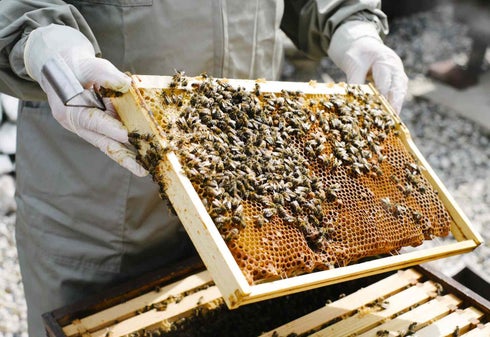

By Nelson Mandela
In Tongaren Constituency, Bungoma County, a self-taught bee farmer named Jerry is transforming lives—and farms—through his innovative approach to beekeeping. With no formal training or agricultural background, Jerry has built a successful apiary business using determination, creativity, and practical learning.
Jerry’s journey began with just a few traditional log hives and improvised materials. Early on, he faced challenges such as low honey yields, pest invasions, and a steep learning curve. But rather than give up, he saw each obstacle as a learning opportunity. His persistence laid the foundation for a thriving enterprise.
A major breakthrough came when Jerry discovered the Langstroth hive, a modern beehive design known for its efficiency and ease of management. With no funds to buy commercial hives, Jerry began crafting his own using locally available wood and tools.
The Langstroth hive’s removable frames allowed Jerry to harvest honey without destroying the comb, enabling bees to replenish honey stores faster. This single innovation drastically improved his yields and scaled up his production.
One of Jerry’s most remarkable techniques involves capturing and relocating wild bee colonies. By using bait hives, he attracts swarms, then carefully transfers brood combs and the queen into a Langstroth box. Using simple tools like rubber bands to secure the combs, Jerry ensures the colony reestablishes with minimal stress. This cost-effective method allows him to grow his bee population without buying new bees—while preserving hardy local bee genetics.
Jerry freely shares his methods with aspiring bee farmers. His practical tips include:
-
Proper Hive Placement: Hives are elevated to deter predators, face the morning sun, and are placed near flowering plants and water sources.
-
Using Queen Excluders: To keep the queen in the brood chamber and ensure the upper frames are filled with honey only.
-
Calm Harvesting Methods: Smoke is used to relax the bees, and full frames are gently removed and returned intact to boost replenishment.
-
Apiary Hygiene: Regular cleaning, ant guards, and barriers against honey badgers keep his hives safe and productive.
Despite financial limitations and seasonal hurdles, Jerry’s commitment to reinvesting his profits and improving his methods has paid off. He’s now a respected voice in his community, inspiring others to view modern beekeeping as a profitable agribusiness and a tool for food security.
Beyond producing high-quality honey, Jerry’s bees contribute to crop pollination and environmental sustainability, making his work an important part of the agricultural ecosystem in western Kenya.
Jerry’s story is a powerful example of what’s possible with ingenuity and perseverance. His journey proves that you don’t need formal training or large capital to succeed in agribusiness—just a willingness to learn, adapt, and share. For anyone looking to venture into beekeeping in Kenya or across Africa, Jerry’s model offers both inspiration and practical guidance.


Add comment
Comments